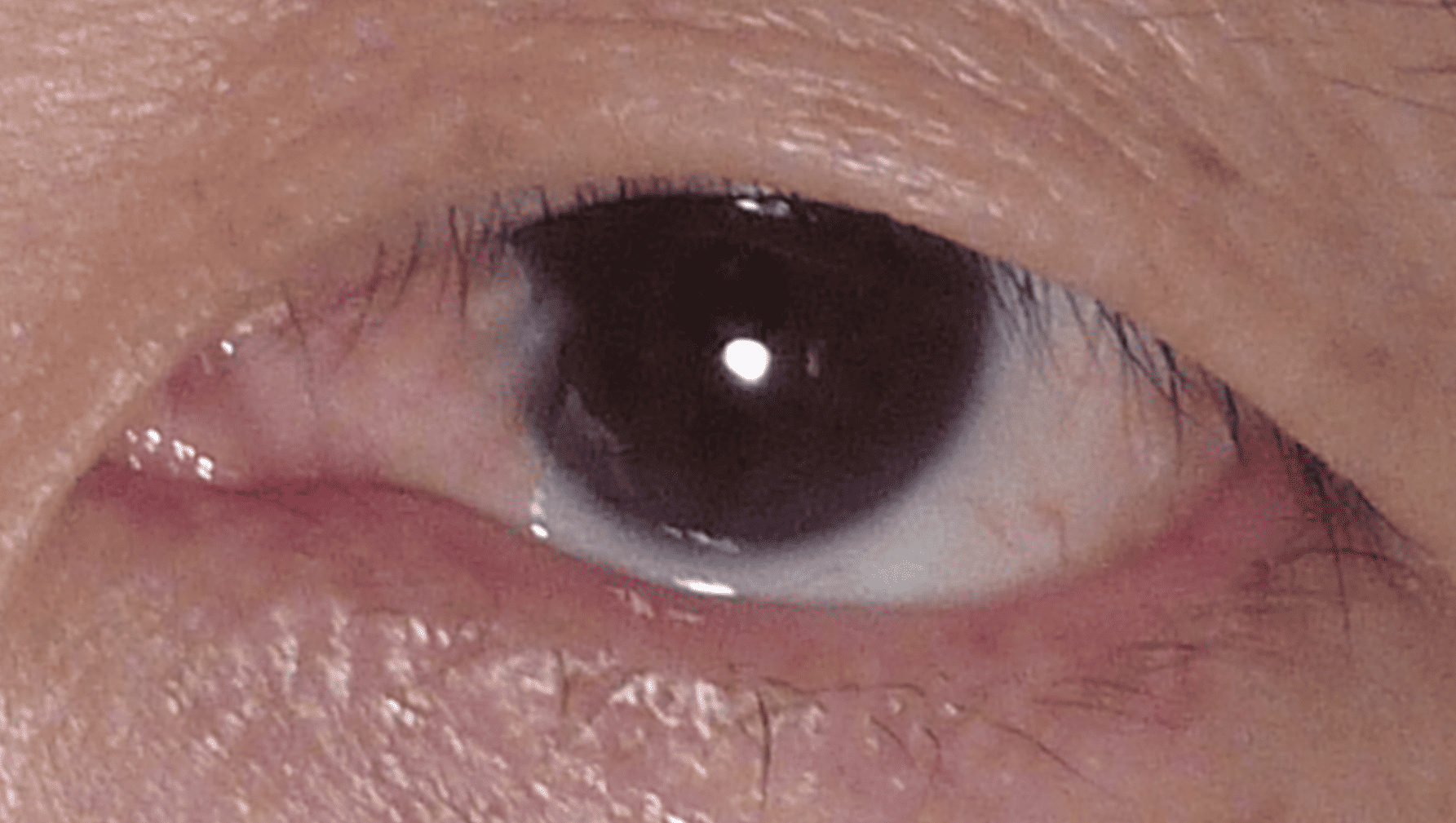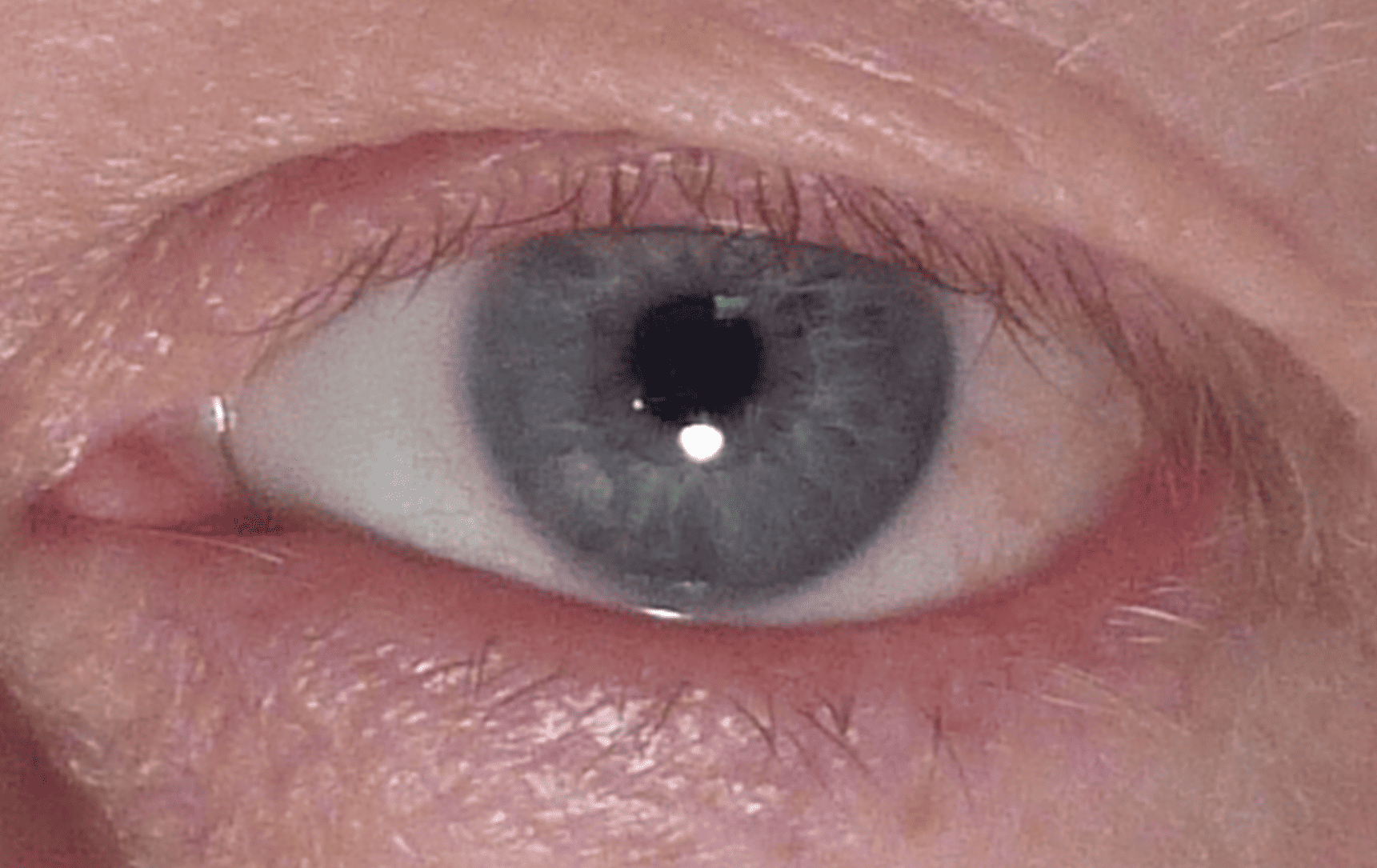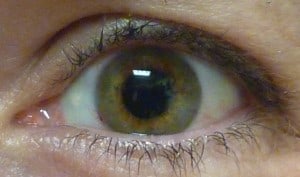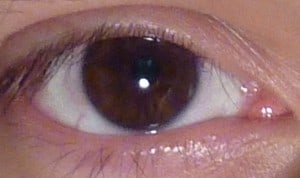 There are many things to love about living in Beverly Hills and the surrounding Southern California areas — particularly the great weather and sunny climate year-round. Unfortunately, excess exposure to ultraviolet light and other environmental irritants, including pollution, smoke, wind and dust, may lead to the development of unusual growths on the eye called pterygia.
There are many things to love about living in Beverly Hills and the surrounding Southern California areas — particularly the great weather and sunny climate year-round. Unfortunately, excess exposure to ultraviolet light and other environmental irritants, including pollution, smoke, wind and dust, may lead to the development of unusual growths on the eye called pterygia.
What is a Pterygium?
A pterygium is a fleshy wing- or wedge-shaped growth that appears on the conjunctiva, the clear membrane covering the eye. Most pterygia begin growing in the inner corner of the eye, next to the side of the nose. As a pterygium progressively enlarges, it can grow over the cornea, the clear dome covering the iris.
Though pterygia are usually benign, they can be unsightly and uncomfortable. If you develop a pterygium, your eyes may constantly look red and irritated. People may ask you if you have been crying because of pterygium-induced redness.
Beyond the cosmetic impact of a pterygium, it may become difficult to tolerate contact lenses as the growth enlarges. You may notice a burning or itching sensation due to a pterygium, or a “foreign body sensation.” Some pterygia can also cause tearing. In the later stages of a pterygium, the enlarged growth may obstruct otherwise-clear vision.
Pterygium Causes
 The exact cause of pterygia is debated among eye doctors. But the growths are commonly believed to result from prolonged exposure to ultraviolet light, wind, dust and pollution. Pterygia earned the nickname “Surfer’s Eye” because they often affect people who spend a lot of time outdoors (including surfing enthusiasts). Working long hours outside can dramatically increase the risk of developing a pterygium.
The exact cause of pterygia is debated among eye doctors. But the growths are commonly believed to result from prolonged exposure to ultraviolet light, wind, dust and pollution. Pterygia earned the nickname “Surfer’s Eye” because they often affect people who spend a lot of time outdoors (including surfing enthusiasts). Working long hours outside can dramatically increase the risk of developing a pterygium.
Get Dr. Brian’s Latest Best-Selling WhiterEyes Book For Free!
(Plus a Complimentary Consultation – Value $207.00)
This book normally is $15.99 plus shipping

Diagnosing a Pterygium
A pterygium is diagnosed with a comprehensive eye examination. Dr. Brian will take a thorough look at your eyes through a lighted microscope called a slit lamp. Along with the exam, Dr. Brian may test your visual acuity and measure your corneal topography to determine whether the pterygium has caused any changes.


















Pterygium Removal With WhiterEyes® Conjunctivoplasty
Dr. Brian treats pterygia with the WhiterEyes® Conjunctivoplasty procedure. In 20 minutes or less, he can remove the tissue growth as well as excessive blood vessels that may be making your eyes look red or bloodshot. The procedure does not take long and is typically painless, but Dr. Brian works meticulously, tissue layer by tissue layer, to ensure the best aesthetic outcomes.
Most patients recover from WhiterEyes® Conjunctivoplasty quickly and can resume work and their normal routines within two to seven days. They often comment that their eyes are moister and more comfortable than they were prior to the procedure.
Dr. Brian asks patients to follow a special eye drop regimen and wear sun protection (e.g., sunglasses with UVA and UVB protection plus a wide-brimmed hat) when spending time outdoors. The chance of a pterygium recurring after the WhiterEyes® Conjunctivoplasty is 7 percent; this is substantially lower than the rates of other pterygium removal techniques.
Learn More About Pterygium Removal at Boxer Wachler Vision Institute
For more information about the WhiterEyes™ Conjunctivoplasty procedure for the treatment of pterygia, please call or email Boxer Wachler Vision Institute today.
Frequently Asked Questions:
What are Pterygium?
Pterygium are growths that form on the conjunctiva, or clear membrane that covers the eye. Pterygium are red growths of excessive blood vessels on white part of the eye which can also grow onto the cornea. They are typically benign (non-cancerous) and do not pose a significant health risk, although are often associated with Dry Eye, Inflammation, Irritation, Foreign Body Sensation, and Discomfort. They can also lead to Contact Lens Intolerance and cause visual disturbance if they advance on to the cornea.
For most people however, the appearance of these growths is the most significant factor even though your eyes may feel completely normal. Something as simple as seeing your eyes in the mirror, or someone asking if you have been crying or smoking drugs profoundly affects self-esteem and disturbs social interactions.
What causes these growths?
These growths are caused by exposure to sunlight and other environmental irritants such as wind, pollution, smoke, and dust. People often refer to the condition as “Surfer’s Eye,” due to the fact that many surfers suffer from this due to their prolonged exposure to sunlight without protection.
How can I avoid Pterygium from developing?
Protecting the eyes from environmental factors is the best way to prevent Pterygium. It can also help to slow the progression of the growths after diagnosis. Wearing sunglasses and hats, along with instilling artificial tears when exposed, are some simple solutions.
Dr. Brian recommends to have a clear UV film placed on the side windows of your car since you get a lot of UV exposure from driving. Left-sided skin cancer on the face and left-sided cataracts are more common because of drivers’ UV exposure in the car.
What treatment is available to remove Pterygium?
Dr. Brian’s WhiterEyes® Conjunctivoplasty procedure is extremely effective in removing these unpleasant growths. A multitude of patients have already experienced the positive effect of clear, whiter eyes in their lives thanks to WhiterEyes® Conjunctivoplasty.
This 20-minute procedure is 100% no-stitch out-patient procedure performed in the comforst of Dr. Brian’s procedure room at his office. No scary surgery center or hospital is required for this procedure. Usually you can resume work and your normal routine within 2-7 days. The results are typically fully seen 8 – 18 weeks after the procedure.
Why is Dr. Brian’s procedure better than other doctors?
Dr. Brian’s technique is more than just the removal of tissue growths. He also pays special detail to address and remove the excessive blood vessels and/or discoloration that are secondary to the growths. Most other doctors are not concerned with the cosmetic appearance of the eye beyond the growths.
In addition, Dr. Brian is able to perform this procedure without the need for AMT (amniotic membrane transplantation) or sutures. This dramatically reduces the risk for visible scarring and irregular tissue growth. Dr. Brian is very meticulous and carefully addresses each layer of the tissue to provide the best cosmetic result.
What can I expect after the procedure?
Patients can usually return to work and their normal routines within 2-7 days after the procedure. It is possible to experience a scratchy or irritated sensation for a few days, as well as some light sensitivity. A small percentage of patients may have some recurrence of blood vessels around the site that growths were removed as well as the growth could begin to reappear. Other rare risks include infection and scleral thinning. We reviewed 1240 eyes that underwent WhiterEyes® and found 3 patients that experienced light sensitivity beyond 6 months (0.4%).
Pterygium recurrence with Dr. Brian’s WhiterEyes® Conjunctivoplasty is very low at 7% – this is the lowest rate among all techniques for Pterygium. Most patients report once the eyes healed they felt the eyes were more moist and comfortable prior to the procedure. Dr. Brian will discuss the risks of the WhiterEyes® procedure in more detail as well as any of your other questions during your consultation.
In order to maximize the long-term effects of the procedure, it is strongly recommended to complete the postoperative eye drop regimen fully and to always use proper protection from sunlight (sunglasses and hats). It is also recommended to instill eye drops whenever your eyes feel dry, or when you know they may be exposed to harsh environmental conditions.
WhiterEyes® can also be used to remove pinguecule (raised bumps on white part of eye) as shown below:
|
|
Dr. Brian’s Landmark Study Found Poor UV Protection in Car Side Windows – That Can Increase Risk of Brown Spots on Left Eyes, Left Sided Skin Cancer, and Cataracts
Don’t Live in the Beverly Hills, Los Angeles Area? That’s Not A Problem.
If you live outside of Southern California, that’s not a problem.
 Every week, patients fly in to meet with Dr. Brian from other parts of the United States, even from all over the world (as far away as United Kingdom, Australia and even China) for Nevus of Ota Treatment with WhiterEyes® Conjunctivoplasty. Our friendly and helpful staff will make your visit to our office “easy and simple” with helpful suggestions on hotels, activities and transportation while you are in town.
Every week, patients fly in to meet with Dr. Brian from other parts of the United States, even from all over the world (as far away as United Kingdom, Australia and even China) for Nevus of Ota Treatment with WhiterEyes® Conjunctivoplasty. Our friendly and helpful staff will make your visit to our office “easy and simple” with helpful suggestions on hotels, activities and transportation while you are in town.
If you don’t live local, the first step is to e-mail some close-up photographs of your eyes to info@boxerwachler.com. Free of charge, Dr. Brian will personally review your photos to preliminary determine if WhiterEyes® Conjunctivoplasty might be right for you. Please take the following 5 photos of your eyes:
- Right Eye – looking straight ahead
- Left Eye – looking straight ahead
- Both Eyes – looking up at the ceiling, keeping head in straight position, only move eyes
- Both Eyes – looking to the far right, keeping head in straight position, only move eyes
- Both Eyes – looking to the far left, keeping head in straight position, only move eyes
Based on these photos Dr. Brian will be able to provide a preliminary determination of candidacy for WhiterEyes® Conjunctivoplasty and an estimated cost for your procedure. After this preliminary approval, you can schedule a in-person consultation and treatment over an easy 3-day visit to our office in Beverly Hills, California. Please understand – photo review is a preliminary evaluation and the final treatment plan and final pricing will be confirmed with you during your in-office consultation with Dr. Brian.
Learn more about flying in for WhiterEyes® Conjunctivoplasty – click here.



















